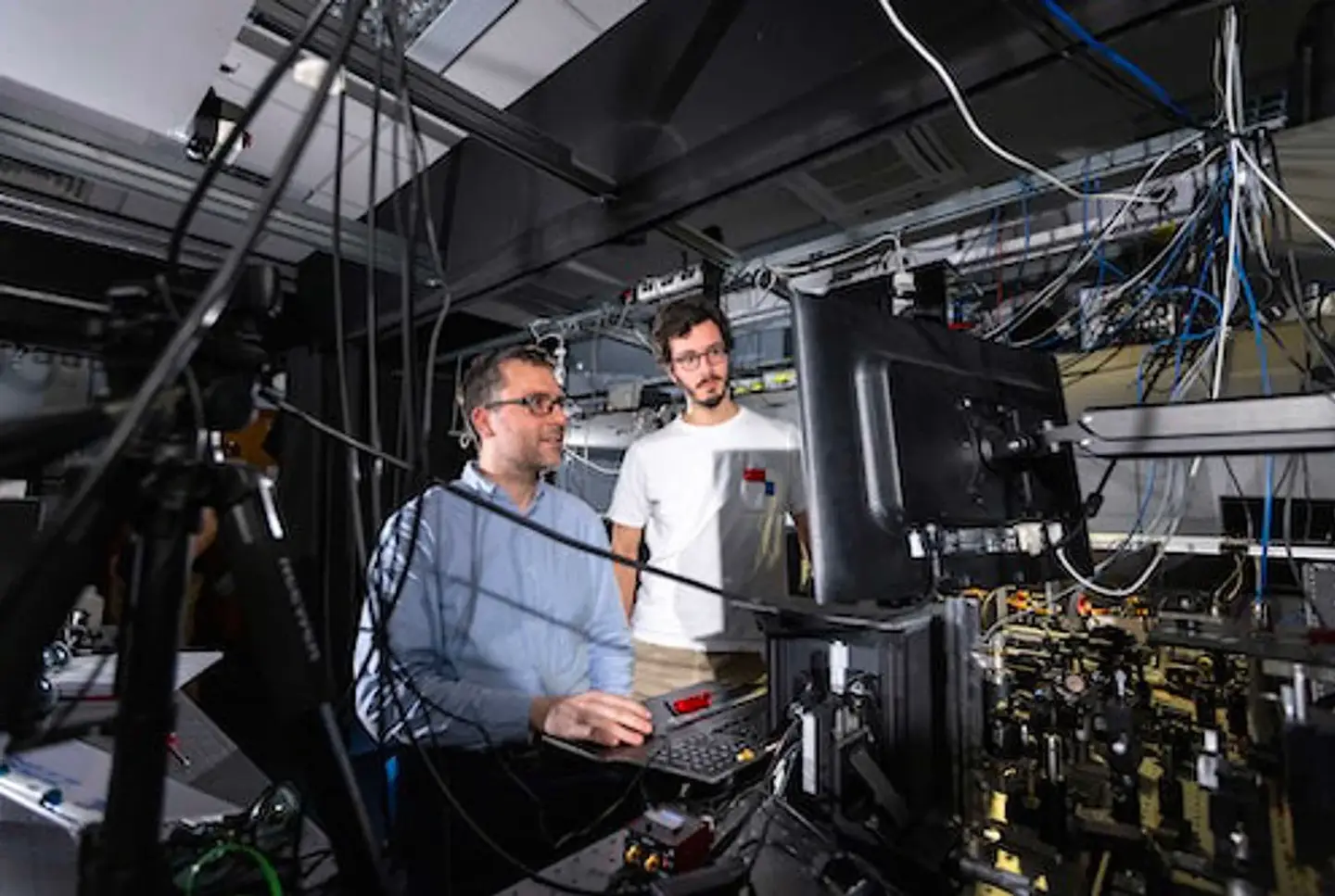A breakthrough experiment in quantum physics proves light travel through space and time
A remarkable breakthrough by physicists from Imperial College London has shed new light on quantum physics by performing a well-known experiment that splits the time frame twice. Led by Professor Riccardo Sapienza from the Department of Physics, this research team examined how light interacts with materials whose optical properties can change within a few femtoseconds, reveal more about the fundamental nature of light.
The first two-dimensional experiment, performed for the first time in 1801 by Thomas Young, showed that light behaves like a wave. Recent experiments have shown that light also behaves like particles, revealing its quantum nature. In this classic experiment, light was passed through two physical gaps, creating an interference pattern that exhibits the properties of light waves. This experiment became important in understanding not only light but also the quantum behavior of particles such as electrons and atoms.
This new test modifies the old model by focusing on frequent changes in light, rather than its direction. The researchers used lasers to control the optical properties of a thin film of indium-tin-oxide, a material commonly found in phone screens. By changing its brightness with precise femtoseconds, the team was able to change the color of the light and create an interference-like pattern with different colors of light coming together.

Published in Nature Physics, this experiment, as Sapienza notes, “reveals more about the fundamental nature of light while serving as a step toward creating the ultimate devices that can control light in space and time.” These devices can greatly advance science in fields ranging from telecommunications to medicine.
One of the major advances from this experiment is the possibility of developing new spectroscopies that can resolve the temporal structure of light waves. Co-author Professor Sir John Pendry said, “The double-slits experiment opens the door to a new approach capable of resolving the temporal structure of the light flux in a single time scale of radiation. .”
These findings are not a step forward in quantum physics but may lead to revolutionary processes in various industries. For example, telecommunications can benefit from new optical switches that can handle faster, more reliable data transmission. By controlling the timing and frequency of light with great precision, this technology could one day enable faster networks and more efficient communications.
In computing, the development of metamaterials that control light can result in optical devices that are faster and more efficient than conventional electronic processors.
Optical computing, where light replaces electricity, has always been the focus of researchers because it promises high data processing speed and low power consumption. Such technology could revolutionize computing by making devices more powerful while reducing their impact on the environment.
Medical technology is another area that can benefit from these discoveries. Light’s ability to be precisely controlled in space and time can lead to advanced imaging tools for diagnosis and treatment. This could allow early detection of disease or the ability to target and destroy cancer cells without damaging nearby tissue, reducing the side effects of treatments such as chemotherapy.

The experiment also lays the groundwork for further research into “time crystals,” which are materials with structures that repeat not only in space but also in time.
According to co-author Professor Stefan Maier, “The concept of time crystals has the potential to lead to very fast, parallel optical switches.” Crystals of this age can help researchers achieve even more refined control over light, opening new avenues for technological advancement.
The importance of this experiment goes beyond telecommunications, computers and medicine. Devices such as those used in this research could have wide-ranging applications in industries such as energy, transportation, aerospace and defense.

For example, fine-tuning light control may enable more efficient power systems or advanced sensor technology for airplanes and cars. Even “black hole physics” can be explored with these new quantum experiments, which increases the wider impact of this research.
As technology advances, the role of metamaterials and quantum physics will become more important. The ability to control light in space and time holds the promise of changing the way we interact with the world, providing faster, more efficient and more accurate tools across industries.
This breakthrough by a team at Imperial College London marks a giant leap in that direction, showing how curiosity-driven research can lead to new approaches that touch many fields.

As Professor Sapienza said, this experiment is only the beginning: “Our work serves as a step towards creating the final devices.” With further research, these new techniques could lead to completely new ways of understanding and controlling light, providing tools that transform everything from the devices in our pockets to to the way we diagnose and treat disease.
#breakthrough #experiment #quantum #physics #proves #light #travel #space #time
